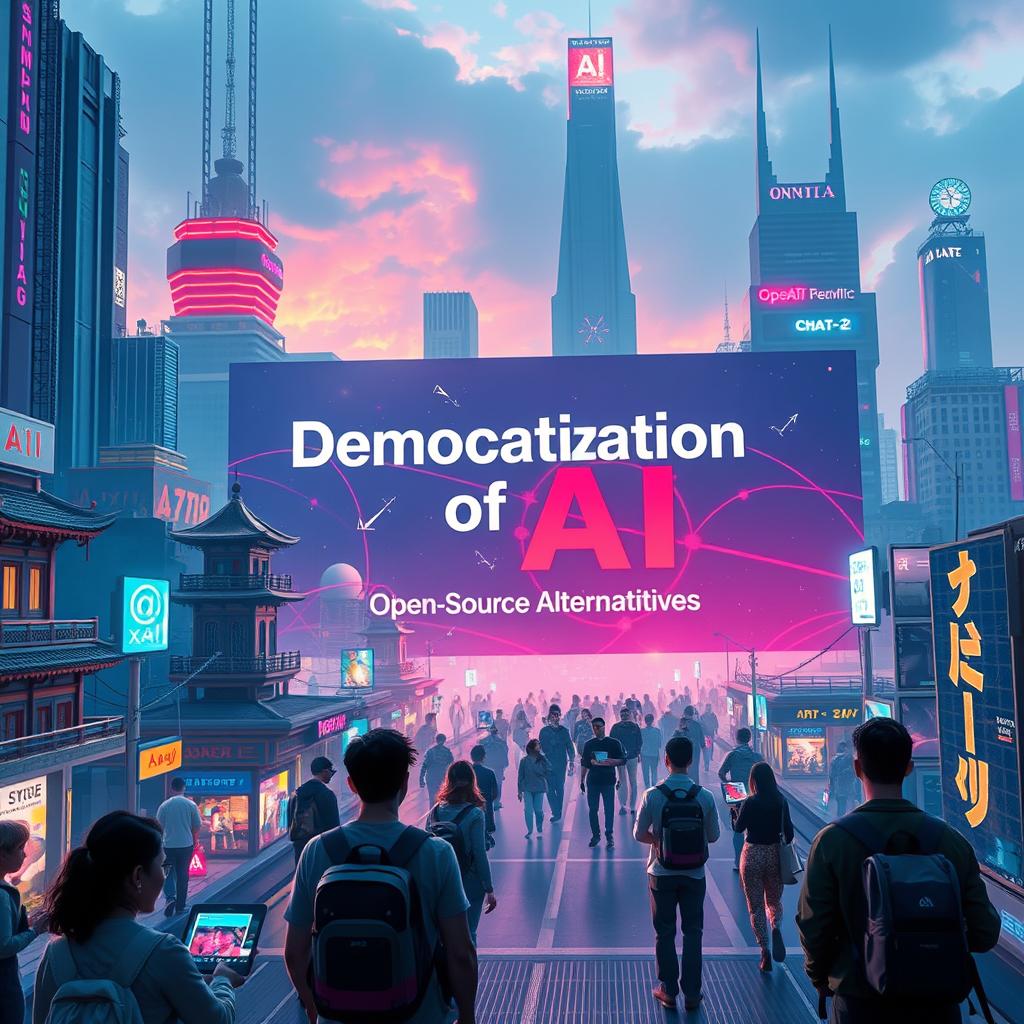Analysis of Recent Developments in AI Technology
The landscape of artificial intelligence (AI) is undergoing a significant transformation, driven by the efforts of tech giants like Google, OpenAI, and xAI (founded by Elon Musk) to democratize access to advanced AI capabilities. This shift is marked by the release of powerful tools and models that were previously inaccessible to the general public, either due to cost or availability.
Google’s Latest Offerings
Google has unveiled several updates to its AI portfolio, directly competing with OpenAI’s recent “12 Days of OpenAI” campaign. Key announcements include:
– Veo 2: A video generation AI model that creates high-quality videos with realistic motion, up to 4K resolution, and extensive camera controls. Unlike most video generators that work at 1080p resolution with shorter run times, Veo’s clips can extend to several minutes in length.
– Whisk: An experimental image creation tool that focuses on restyling and using visual and pictographic inputs to produce visual outputs, minimizing the need for detailed text prompts.
– Imagen 3: An improved image generation model available for free in the Google Gemini chatbot app, offering enhancements in detail rendering, style diversity, and reduced hallucinations, along with text generation capabilities.
These models, including Gemini 2.0 Flash and the experimental Gemini 2.0 Advanced, are available for free or with reduced restrictions, signaling Google’s commitment to making AI more accessible.
OpenAI’s Democratization Efforts
OpenAI’s “12 Days of OpenAI” campaign introduced several powerful tools to the public, including:
– Sora: A state-of-the-art text-to-video generator, although it requires a ChatGPT Plus subscription.
– OpenAI o1: An advanced reasoning model.
– SearchGPT: A sophisticated web search integration available for free users.
These releases demonstrate OpenAI’s strategy to lead in AI democratization, making advanced tools available to a broader audience.
xAI’s Entry into the Scene
xAI, with its Grok-2 model, has entered the competition, offering substantial improvements in speed and capability. The model runs three times faster than its predecessor and delivers improved accuracy, instruction-following, and multilingual capabilities. Additionally, xAI has:
– Integrated Grok with web search capabilities, allowing users to verify information and explore sources directly.
– Launched Aurora, its own image generation model, offering photorealistic images with less prompt adherence and censorship.
– Reduced API access prices significantly, to $2 per million input tokens and $10 per million output tokens, to support developers and enterprises.
Predictions for the Future of AI Accessibility
The current race among tech giants to democratize AI is expected to accelerate the evolution of AI capabilities, making them more accessible and user-friendly. This could lead to a new era of AI-powered creativity and productivity, as users gain access to tools that were previously exclusive to select developers or paying customers.
However, the rise of open-source AI models like Genmo Mochi 1, Flux, Stable Diffusion, and Llama-3 presents an alternative. These models are not only free and fully customizable but also offer transparency, potentially competing with the offerings of tech giants.
Key Takeaways
- Democratization of AI: The recent efforts by Google, OpenAI, and xAI to make advanced AI tools more accessible are likely to revolutionize the way individuals and businesses interact with AI.
- Competition and Innovation: The competitive landscape is driving innovation, with each company pushing the boundaries of what’s possible in AI.
- Open-Source Alternatives: Users have viable open-source options that are free, customizable, and transparent, offering an alternative to the models provided by major tech companies.
As the AI landscape continues to evolve, it’s crucial for users to explore both the offerings of tech giants and open-source alternatives to find the best fit for their needs, whether in creativity, productivity, or development. The future of AI accessibility looks promising, with significant potential for growth and innovation in the years to come.




